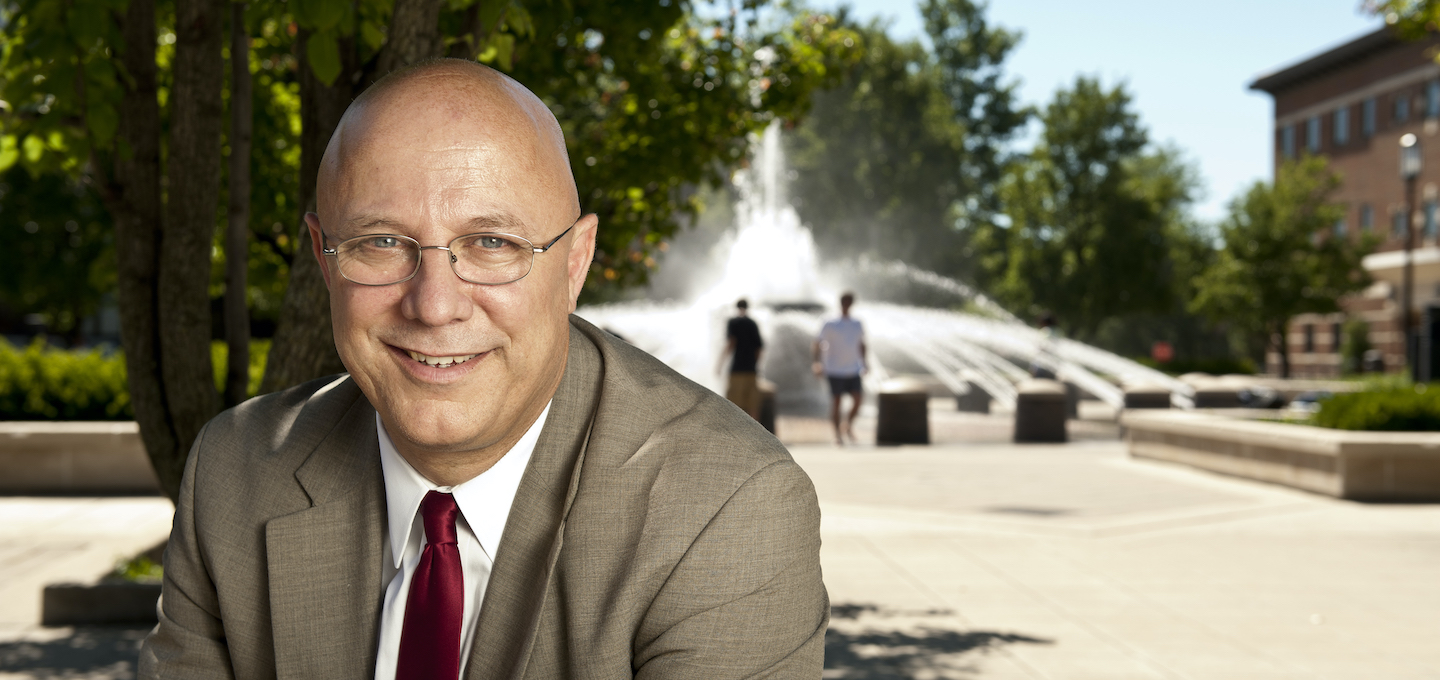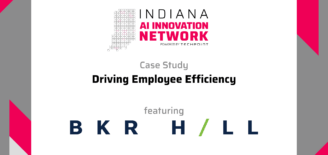Demand for online education is spiking. How Indiana is responding (Part III)
Editor’s Note: This series began before the COVID-19 pandemic. Response to it will have a significant impact on the number of students taking online courses and how schools are using technology to make coursework available. Indiana institutions like Purdue University are well positioned to adapt to this new normal.
In response to the pandemic, Purdue University closed its campus and moved to online classes March 23. The first day of this new Boilermaker normal began with an unscripted video address from University President Mitch Daniels in which he lauded faculty, grad students and teaching assistants for using the planned Spring Break to prepare for virtual coursework.
“You’ll have to help us with this,” Daniels said directly to students, calling on them to constructively criticize and call attention to problems they encounter as the university rolls out solely online education where before it was available primarily as a value-add for students who missed in-person class and was not used for all classes.
More than 6.6 million postsecondary students in the U.S. were seeking their degrees at least partly online in 2017. Inside Higher Ed, relying on the U.S. Department of Education’s National Center for Education data, reported in late 2018 that the number of students from fall 2016 to fall 2017 who took at least some of their courses online grew by 5.7 percent compared to a dip of nearly half a percentage point for traditional classwork. The proportion of students enrolled exclusively online grew by 14.7 percent. Those mixing it up with both classroom and online instruction grew by 17.6 percent. More than 33 percent of students reported taking at least one course online.
Building the online education infrastructure
Purdue University emerged after President Abraham Lincoln signed the Morrill Land Grant Act in 1862, which turned public lands over to any state that agreed to use the land sale proceeds to maintain a college teaching agriculture and the “mechanic arts.” Three years later, the Indiana General Assembly voted to participate in the plan and in 1869 chose West Lafayette for the new institution. With a $150,000 gift from businessman John Purdue, $50,000 from Tippecanoe County and 100 acres from local residents, the school was established and named Purdue University.
The university launched online and hybrid online programs years ago, but in 2017 made a strategic move to up that game when it bought Kaplan University and used its infrastructure to create Purdue Global. In 2018, Purdue Online was created to coordinate and grow the online programs offered by Purdue’s three physical campuses (the flagship in West Lafayette, Fort Wayne and Northwest) and Purdue Global. One of Purdue’s strategic initiatives, which are called Purdue Moves, is to lead in educating all types of students online, whether traditional undergraduate students as part of their residential experience, mid-career students seeking advanced professional degrees, or nontraditional adult learners hoping to earn a college degree or enhance or retool their career skills.
“This is where we’re headed with Purdue Online and Purdue Global, certainly for the benefit of students in Indiana, but beyond the state’s borders as well. Purdue, after all, is an institution of higher learning known around the world,” said Gerry McCartney, Executive Vice President, Purdue Online.
Making the most of powerful online resources
Gerry says good online students aren’t terribly different than good off-line students, although they may face different challenges.
“They’re both better off if they tend to be self-motivated, good time managers and disciplined and persistent in taking steps toward accomplishing their academic goals. For the online student, it also helps if they have written communications skills, since that is largely how they will be communicating in their online coursework; a willingness to ask questions, because their online instructors won’t have the benefit of nonverbal cues like facial expressions to determine if the point is getting across; and, naturally, basic technical skills like navigating online environments and downloading software,” he said.
Students who procrastinate or feel they need the structure of being in a classroom to motivate them may have trouble with online courses, Gerry says, adding that Purdue is working hard in this new environment to respond to students having these kinds of issues.
“From an institutional perspective, you need leadership and faculty buy-in to be successful and you need to be prepared to invest in a user-friendly infrastructure,” Gerry says.
University leaders are pleased with the success of Purdue’s highly ranked schools of Civil Engineering, Electrical and Computer Engineering, and Mechanical Engineering, which are or soon will offer affordable and fully online master’s programs — the first ever offered at less than $25,000 — through edX. This includes a “MicroMasters” program in Advanced Electronics that can stack up to a full master’s degree in Electrical and Computer Engineering.
MicroMasters are the edX name for a series of graduate-level courses that teach valuable stand-alone skills for career advancement, while at the same time serving as stepping stones to a full master’s degree. Students win whether they decide to go full degree or not.
Also of note are a number of career advancement partnerships Purdue has developed since the advent of Purdue Online, including programs in high-demand fields such as analytics, data science and cybersecurity. Meanwhile, Purdue Global is now the preferred provider for educational benefits offered by a number of major corporations, among them New Balance, Papa John’s, Securitas and Trilogy Health Services.
Growing enrollment, growing online and growing hybrid programs
While some institutions have resisted offering online courses, in some cases for fear it would overcome traditional enrollment, Purdue hasn’t had that concern.
“We have swum against the current of decreasing enrollment others have seen,” Gerry said. “Our on-campus enrollment actually has been growing, to the point where we’re beginning to ask just how big we should allow ourselves to become.”
While this semester will finish as online only, the university put in hundreds of hours over what was supposed to be Spring Break to ensure the semester could safely be completed.
The university will evaluate how to proceed when the world is once again allowed to safely gather in person. Purdue will get back to in-person teaching and learning when it is safe to do so again, but also evaluate what it learns from its stint as an entirely online university.
“We really are at a point where life-long learning is almost essential,” he said. “The pandemic just reinforces that online offerings are key to making learning possible anytime anywhere as individual, or societal, circumstances dictate.”








































